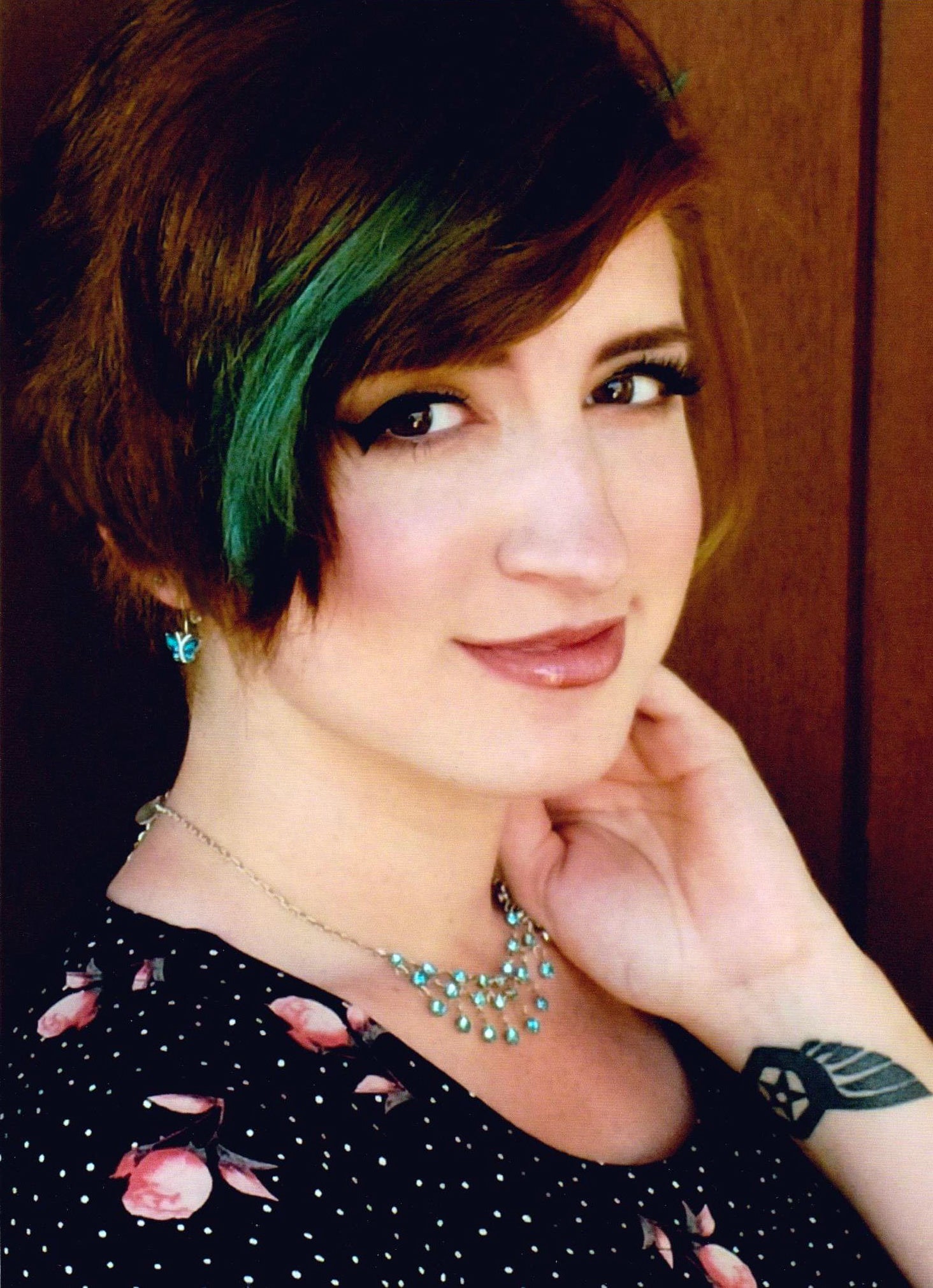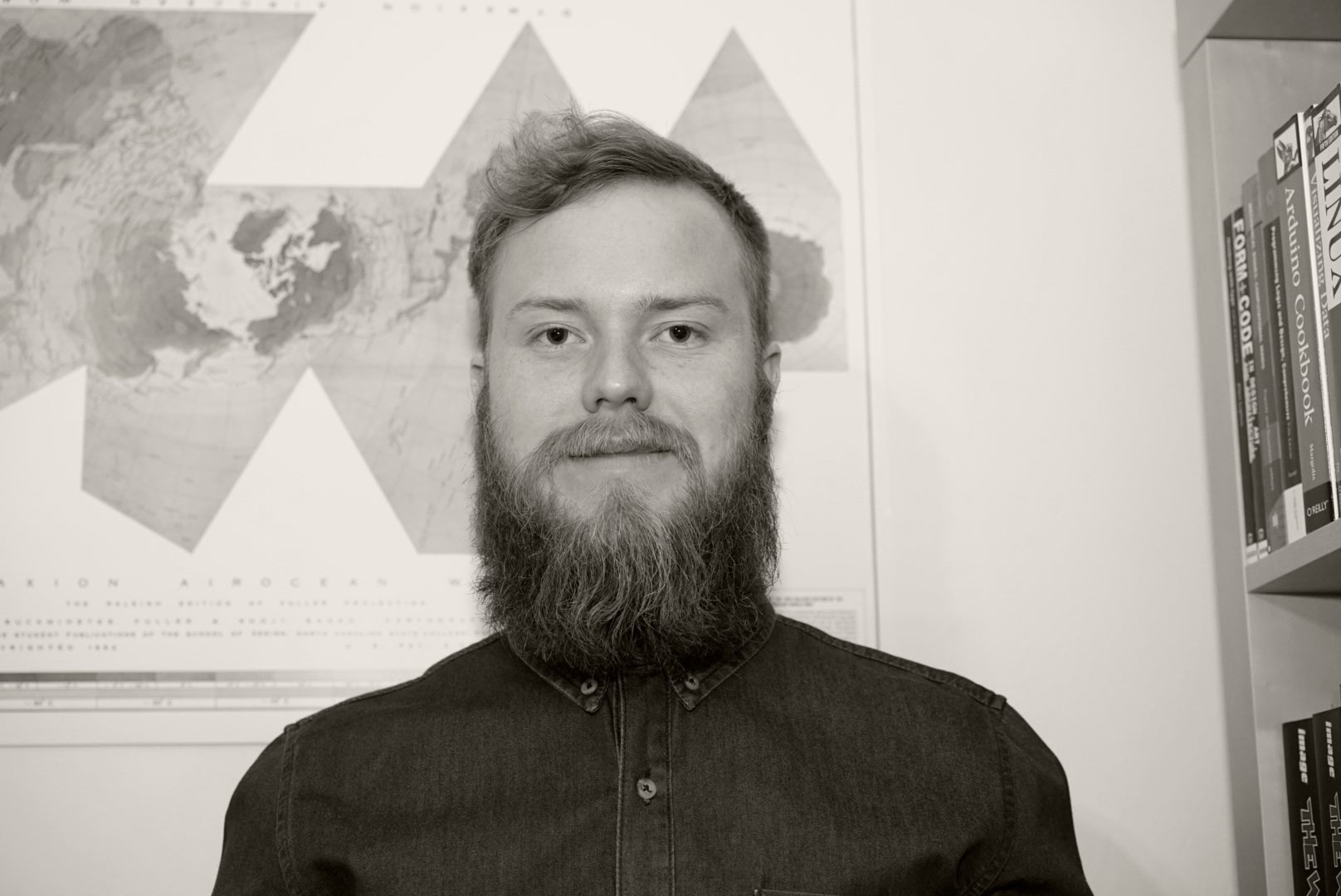Four years ago, ASU’s School of Arts, Media and Engineering launched the Bachelor of Arts in Digital Culture program, one of the first proficiency-based digital media degrees in the United States.
The digital culture undergraduate degree, in the Herberger Institute for Design and the Arts, is housed in a facility that gives students access to cutting-edge tools and technology. The innovative program is a collaboration among not only the schools in the Herberger Institute — Art; Arts, Media and Engineering; Design; Film, Dance and Theatre; and Music — but also numerous partnering academic units across ASU, from electrical engineering, journalism and mass communications to computer science, education and human evolution and social change.
So how are the first, newly minted digital culture alums doing?
If Elizabeth Vegh is any indication, they’re doing very well.
Vegh (pictured left) graduated from ASU last year as a digital culture major specializing in art and almost immediately landed a job as a graphic designer for CBS 5 News in Phoenix.
“I never took any graphic design courses (in college),” Vegh said, “but I had developed my skills with timing and storytelling (for animation), which my supervisor later told me is what put me ahead of the other applicants. I also had a lot of chances to go over how to create the best pitch and portfolio possible. I don't think I would have been as successful with my current line of work without that practice.”
Sha Xin Wei, director of the School of Arts, Media and Engineering, said Vegh’s success is one example of the digital culture program’s many achievements.
“We are creating experience entrepreneurs,” Sha said. “Students are learning to use digital technology to create, customize and enrich the way we experience the world. Many argue that we are living in an ‘experience economy’ and that companies that can create compelling experiences will thrive. We are preparing graduates to drive this new economy.”
The big question students hear, according to Sha and the students themselves, is, “What is digital culture?” Sha said part of the answer comes from the students themselves, and from the projects they’re working on with faculty. Through the program, students are able to define the paths they take, both at ASU and beyond.
“Whenever I get asked about digital culture, the first description that comes to mind is ‘art fused with technology,’ " said Vegh, who started out in film and then switched to digital culture because of her interest in animation. “To me, it's all about how to use both mediums to create some sort of experience for the public, whether if it's for research or entertainment purposes.”
While in college, Vegh, who graduated in May 2014, worked with ASU’s Center for Science and the Imagination as its videographer, editor and events specialist. Working closely with Ed Finn, the center’s director and an arts, media and engineering faculty member, she went on to create podcasts, posters and animations that have been featured in the online magazine Slate, Future Tense and Valley TV affiliates.
“Digital culture gave me a lot of experience pitching ideas for an audience and networking with really important figures in both the science and entertainment industry,” Vegh said. “I also had access to a lot of technology and programs that I wouldn't have had access to without being in the digital culture program.”
Matthew Briggs began his career at ASU studying business but segued to a digital culture degree program at the urging of his adviser. Courtesy photos.
Matthew Briggs’ current line of work grew directly out of his experience as a digital culture major, but he started out even farther outside the field than Vegh did. He was in the business school, thinking about going into accounting, when he realized that wasn’t what he wanted to do. Based on his interests, including music and digital technology, his adviser suggested he check out “this new program that just came online” — digital culture.
Briggs said it was a perfect fit.
“I didn’t have a goal to be a specific job type or position. I was just interested in gaining some skills and knowledge and exposure,” he said. “That exploration aspect of digital culture was really key for me.”
After graduating in May 2015, he ended up with a double major in digital culture, with a focus on design, and graphic information technology, as well as a double minor in film and media production and music. Today he works as a specialist in ASU’s digital culture fabrication lab, a job the multimedia artist discovered as a student.
Briggs said that the faculty in the digital culture program prepare students for life after college “in the most important way” — by teaching them how to become resourceful.
“They give you principles and theories and skills,” Briggs said. “They teach you the tools, too, but it really helps you gain that mentality of how to find and learn and become fluent in these technologies, tools and techniques. Because the industry will change, but your ability to change with it doesn’t. You’re a lot more adaptable, I think. You learn how to learn.”
Data shows that students who take at least one creative class are more likely to succeed, and that creative thinking is highly sought after by employers. Moheeb Zara, who took numerous digital culture classes while he was a student at ASU, was recently awarded a Top Innovator award at the 2015 Intel Innovation Summit for his work with Octoblu, an “Internet of Everything” company that runs on Intel’s platforms and whose ambitious mission is “to connect anything with everything.” A co-founder of the Southwest Maker Festival, Zara describes himself as a hardware hacker, an activist, a maker, an artist, a robotics mentor, a technological dilettante and a promoter of science education, among other things.
Learning how to learn is what the Steven J. Tepper, dean of the Herberger Institute, calls “a core 21st-century competency.”
“For most college graduates these days, the future of work is unpredictable, non-linear and constantly evolving,” Tepper said. “In fact, a recent study found that almost half of the current occupations probably won’t exist in the next few decades. A program such as digital culture allows our faculty, students and graduates to help invent the jobs and the businesses of the future, and to come up with new platforms and technology for the exchange of culture and the enrichment of the human experience.”
Plus, alums like Vegh and Briggs say it’s a lot more interesting and rewarding than what they were doing before they entered the world of digital culture.
To learn more about the program, visit the Digital Culture website (http://digitalculture.asu.edu) or come in person to the Digital Culture Showcase, which takes place the first Friday of May and December every year and is free and open to the public.
More Science and technology

ASU to host 2 new 51 Pegasi b Fellows, cementing leadership in exoplanet research
Arizona State University continues its rapid rise in planetary astronomy, welcoming two new 51 Pegasi b Fellows to its exoplanet research team in fall 2025. The Heising-Simons Foundation awarded the…

ASU students win big at homeland security design challenge
By Cynthia GerberArizona State University students took home five prizes — including two first-place victories — from this year’s Designing Actionable Solutions for a Secure Homeland student design…

Swarm science: Oral bacteria move in waves to spread and survive
Swarming behaviors appear everywhere in nature — from schools of fish darting in synchrony to locusts sweeping across landscapes in coordinated waves. On winter evenings, just before dusk, hundreds…




